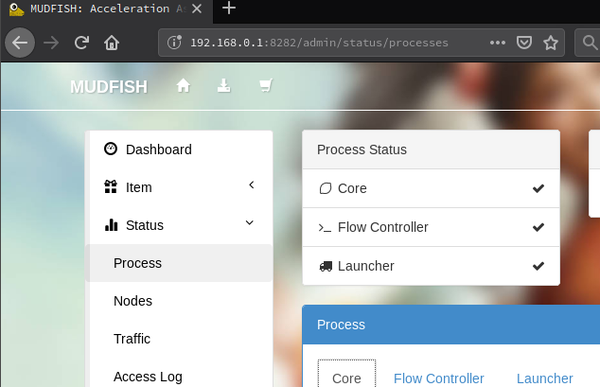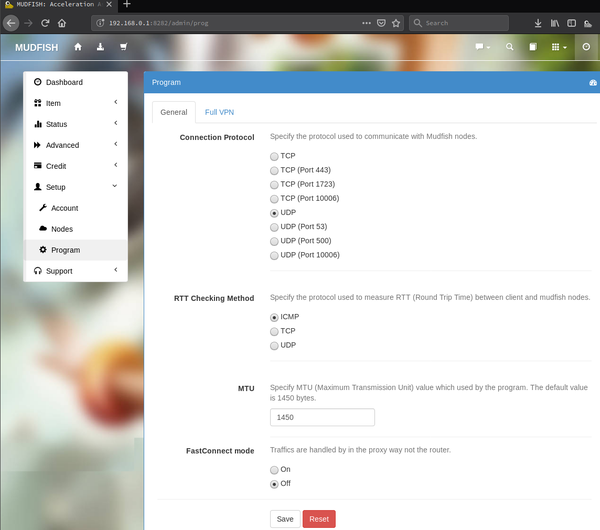Self-Diagnosis Codes
This page is to describe self-diagnosis codes which could be helpful when the auto configuration of mudfish is stuck at 10%.
t100
Core Process is ready.
This test means that Mudfish core process is ready to accept the routing information. If this is marked as X, normally it means Mudfish is booting up yet.
For more details about the status of mudfish core process, you can check "Dashboard → Status → Process" menu.

Sometimes it takes long if your default connection protocol is set as TCP instead of UDP.

t101
Items whose node is picked automatically.
This informs about what item is configured to pick the mudfish node automatically because it takes some times to calculate a best node from yours desktop.
If you're like to reduce this calculation time, you can explicitly pick a node for each items.
t102
Items whose mudfish node is dead.
This shows item list which is configured to pick a dead mudfish node. Because sometimes mudfish node could be up or down, it could make a problem for auto configuration.
To address this problem, visit each item configuration menu then pick another alive node.
t200
Master Server test: Homepage
Checks the connection status to Master Server test: Homepage
t201
Master Server test: Homepage
Checks the connection status to Master Server test: Authentication daemon
t202
Master Server test: RTT daemon
Checks the connection status to Master Server test: RTT daemon.
t300
Firewall Test: KR Asia (S. Korea - KT1 IDC) TCP Port
Performs the firewall test against KR Asia (S. Korea - KT1 IDC) TCP Port. If this test fails, it means there are any kind of network firewall on your network or middle of routing paths.
Please check Firewall Issues and Connection Protocols sections and try to use different ports.

t301
Firewall Test: JP Asia (Tokyo - SoftBank) TCP Port
Performs the firewall test against JP Asia (Tokyo - SoftBank) TCP Port. If this test fails, it means there are any kind of network firewall on your network or middle of routing paths.
Please check Firewall Issues and Connection Protocols sections and try to use different ports.

t302
Firewall Test: KR Asia (S. Korea - KT1 IDC) UDP Port
Performs the firewall test against KR Asia (S. Korea - KT1 IDC) UDP Port. If this test fails, it means there are any kind of network firewall on your network or middle of routing paths.
Please check Firewall Issues and Connection Protocols sections and try to use different ports.

t303
Firewall Test: JP Asia (Tokyo - SoftBank) UDP Port
Performs the firewall test against JP Asia (Tokyo - SoftBank) UDP Port. If this test fails, it means there are any kind of network firewall on your network or middle of routing paths.
Please check Firewall Issues and Connection Protocols sections and try to use different ports.

t400
Private Network test: KR Asia (S. Korea - KT1 IDC)
Performs the private network test against KR Asia (S. Korea - KT1 IDC). If you encounter this issue, please see below t401 section for solutions.
t401
Private Network test: JP Asia (Tokyo - SoftBank)
Performas the private network test against JP Asia (Tokyo - SoftBank).
If this marked as X, please check the following items:
-
Sometimes MUDEC_00044 and MUDEC_00045 error codes causes this issue too. It means that your operating system isn't ready to pass packets to mudfish though mudfish is already ready to receive.
-
Make sure that JP Asia (Tokyo - SoftBank) node is alive. VPN Server status link is for you.

-
Make sure that above t100 (Core proces is ready) is marked as OK. If it's not marked as OK, these tests could also be failed.